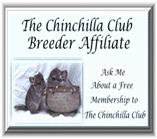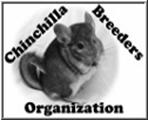“Breeding to improve” should be the motto of every responsible chinchilla breeder. Making money, showing the children the marvels of reproduction and birth, and just to produce cute kits are not responsible reasons to breed chinchillas. First, you won’t make money selling chinchilla babies unless your herd consists of hundreds of breeding animals. Second, breeding can be a very difficult and sometimes heartbreaking undertaking. Lastly, each of those “cute kits” will require hours of care. Once weaned, each kit will need to be placed with responsible owners who will continue the level of care even after the cuteness of babyhood is gone.

A poor quality chinchilla. Note the bad fur,
bad proportions, and fur chewing.
Knowledge, experience and devotion to this little animal are required to be a responsible breeder. These things are necessary to produce a litter of kits that come as close as possible to the ideal of a perfect chinchilla. In other words, a responsible breeder strives to preserve those characteristics that make chins unique: in other words, they breed to improve.
We all feel that our chinchilla is the best chin in the world. This is only human nature and is referred to as “herd blindness”. A responsible breeder needs to avoid this and take a step back and evaluate their animals without bias. They need to take note of each chin’s faults and good points and pair them with animals that eliminate or balance those faults, keeping in mind that the goal is to breed to improve. To improve, the bad traits need to be bred out of the line and the good ones need to be preserved.

A 3rd place chinchilla. Note the even
fur, blocky body and good proportions.
If the decision is made to continue with breeding, take a good hard look at the chinchillas that will be used. Look for any flaws and good points. The mate should be one that balances or eliminates those flaws. The best way to get a good idea of a chinchilla’s quality is to test it against other chins by entering a show. If a chin does well in a show, it can make a contribution to the breed. A veterinarian cannot tell if a chinchilla is of breeding quality since the health of the chinchilla is not the sole criteria. They can only comment on the chinchilla’s current state of health and not on other characteristics that are required of a breeding chinchilla. Experienced breeders or chinchilla judges are the only people who can determine if a particular chinchilla is of breeding quality and the best place to fine them is at a show.
Chinchilla shows are also a good place to learn what a good quality chinchilla is supposed to look like. Can’t get to a show? The chinchilla can be taken to a local chinchilla rancher or judge to be evaluated. Many would be more than happy to help by giving an unbiased opinion about the quality of the chin and what type of animals would be best to pair with it.






